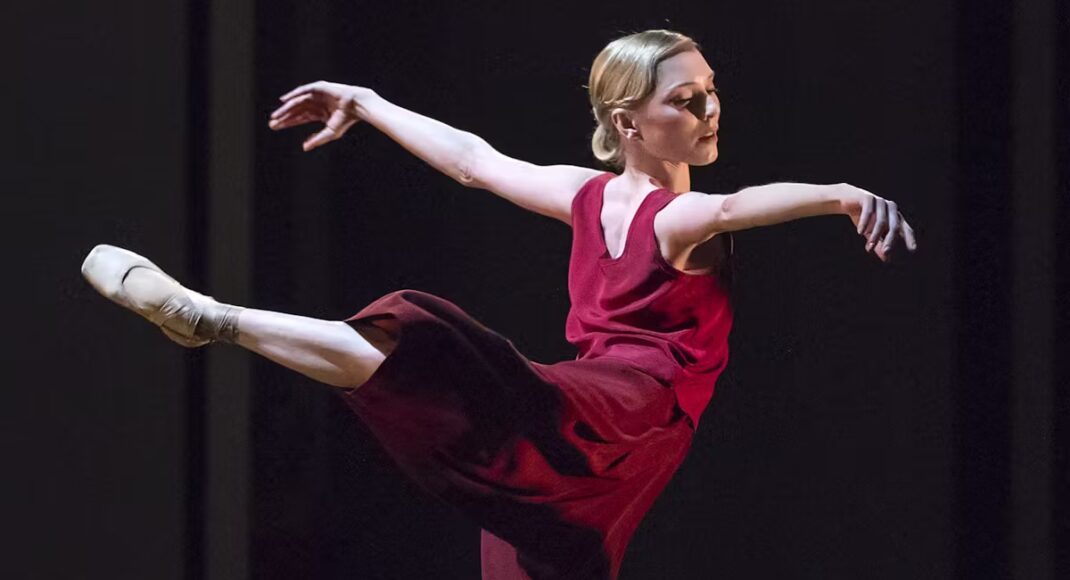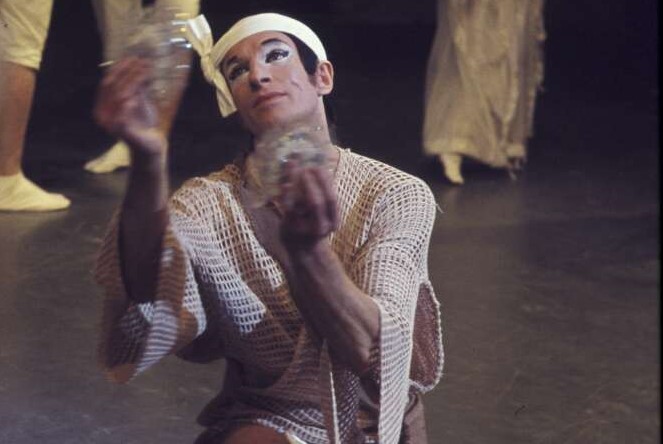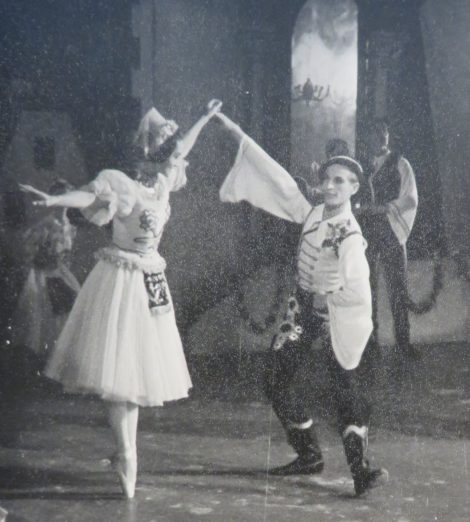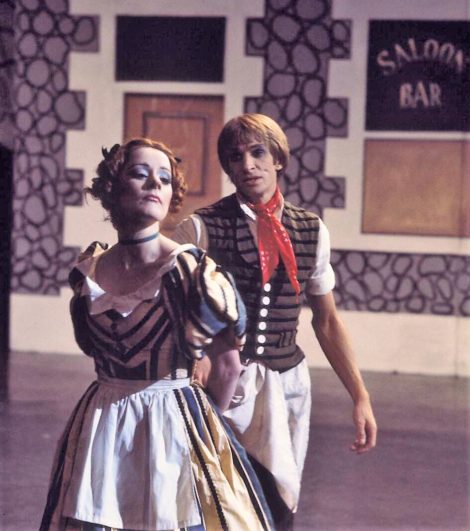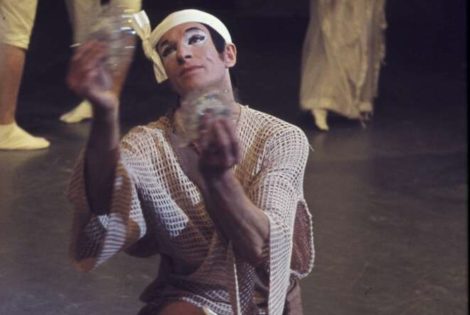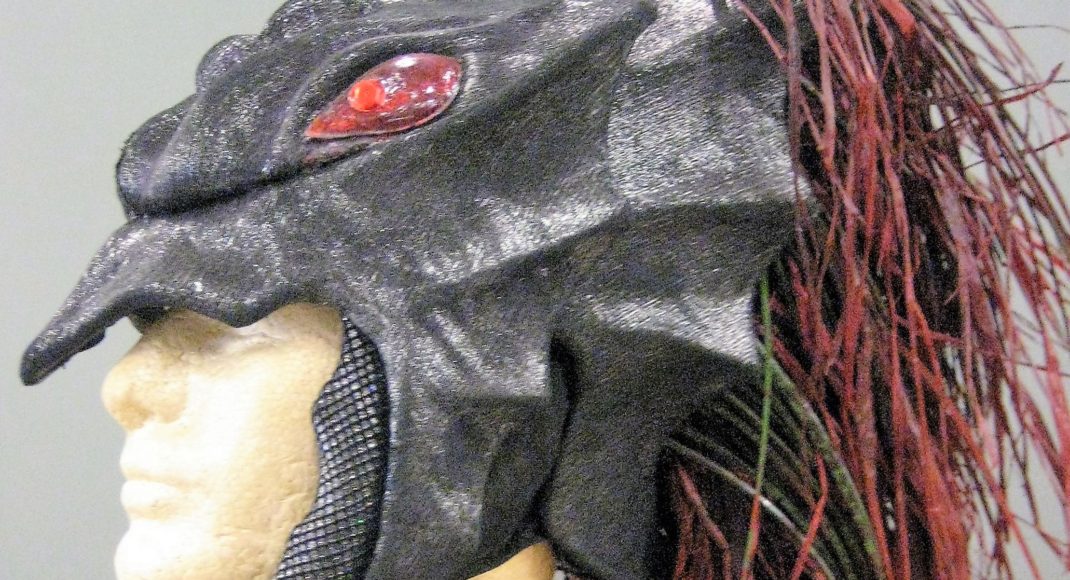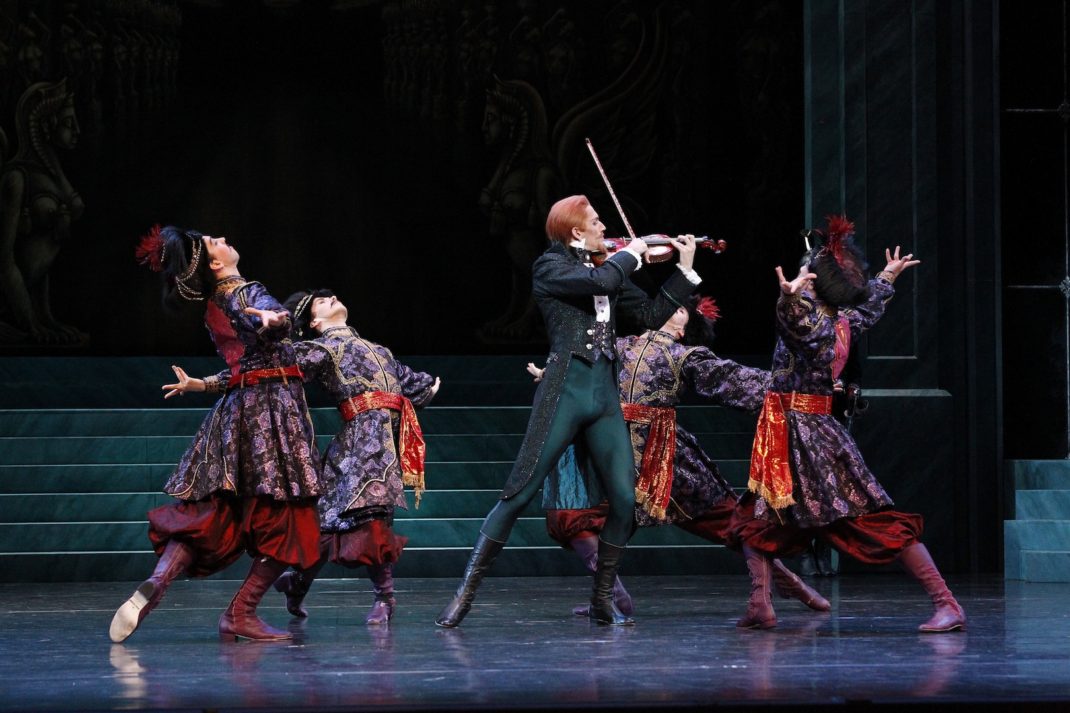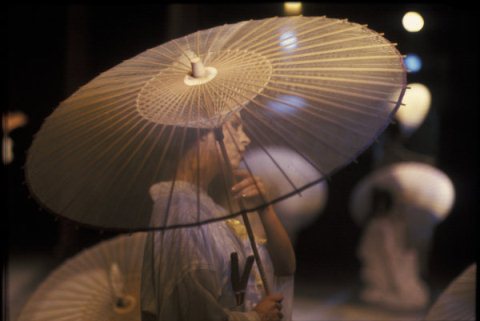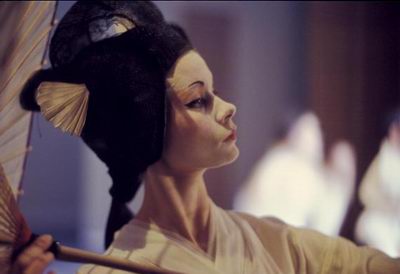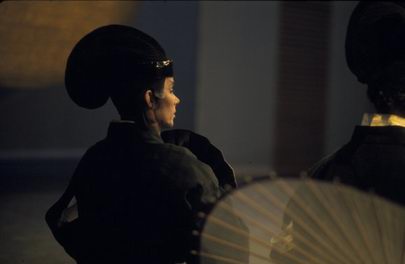Via the ROH streaming platform
I was really surprised to discover (belatedly) that the Royal Ballet’s repertoire included a work called Yugen, choreographed by Wayne McGregor and presented in 2018. Australians of a certain age will remember Robert Helpmann’s narrative ballet Yugen, which he created for the Australian Ballet in 1965. Helpmann’s Yugen was freely adapted from the Japanese Noh play Hageromo. It told the story of Tsukiyomo the Moon Goddess and, in essence, focused on the outcome of an event one night when Tsukiyomo came down to earth to bathe in a lagoon but had her wings stolen by a local fisherman, Hakuryo, who believed they were rare shells.

‘Yugen’ is a Zen Buddhist term and was defined by Helpmann in program notes to his ballet as ‘the most gracefully refined expression of beauty; beauty which is felt—as the shadow of a cloud momentarily before the moon’.
McGregor’s Yugen couldn’t be more different. His interpretation of the word ‘yugen’ is of course similar to that of Helpmann. In an ‘extra’ to the ROH stream, McGregor says the word means ‘mysterious or profound grace, something that has a mercurial beauty’. But there is no specific narrative line in McGregor’s production, although when watching it one is tempted to create a story in one’s mind as the work progresses. This is especially so with the relationship that seems to evolve between and beyond the leading dancers, Calvin Richardson, Sarah Lamb and Federico Bonelli, along with Joseph Sissens who takes a significant role as the work moves to an end. And also in that ‘extra’ to the stream, McGregor mentions that in his Yugen there is no obvious storyline, but goes on to say that he believes there is no such thing as a non-narrative ballet as audiences tend to imagine their own story (as indeed I did).
Choreographically, whether we see/imagine a narrative or not, McGregor’s work for eleven dancers is quite stunning. Danced to Leonard Bernstein’s Chichester Psalms and presented as part of Bernstein’s centenary celebrations, the work begins dramatically in front of Edmund de Waal’s set of rectangular structures of different heights and depths.
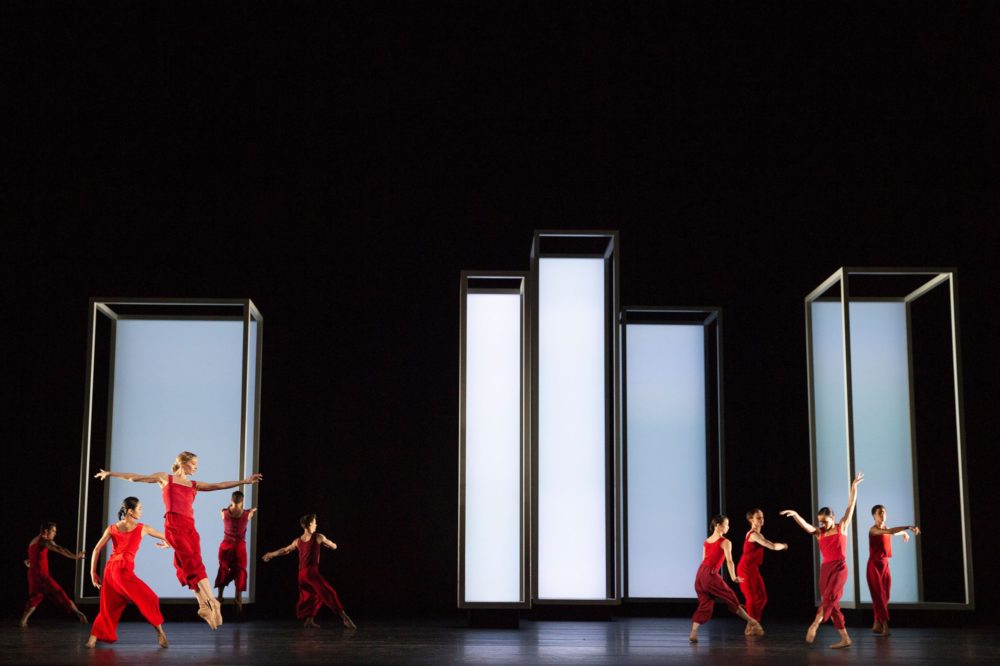
From there the work proceeds through duets, solos and other combinations of dancers. A highlight is a solo from Richardson in which he seems to puzzle over his existence or state of being. Sarah Lamb performs McGregor’s demanding movements calmly and with amazing skill and it is such a pleasure seeing her look into the face of Bonelli who partners her through the work. They are clearly connected, emotionally or otherwise.
McGregor’s choreography is filled with exceptionally lyrical movements of the arms and upper body. And, as ever, he uses the space of the stage in unusual and thought-provoking ways. Watching is a moving and often surprising experience. It’s a waiting game too as one waits to see what will happen next in terms of how the body can move. Costumes by Shirin Guild allow McGregor’s diverse and fluid movements to be seen at their best
But perhaps the most deeply involving moments come as the work concludes. In a duet, with no one else on stage, and with the lighting (from Lucy Carter) progressively darkening, Sissens leads Richardson into the blackness. Is it to his death?
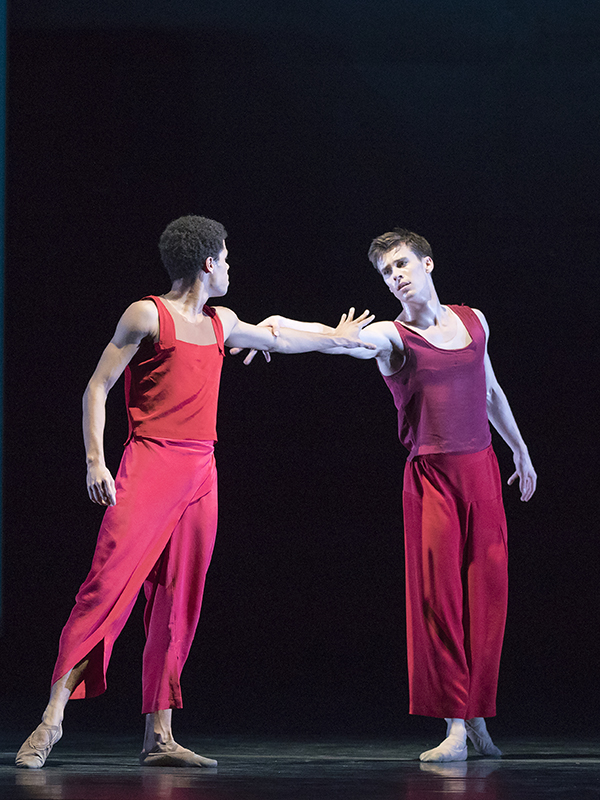
I probably need to relate the choreography of McGregor’s work more closely to the various psalms that are sung during the work. Perhaps another viewing? On this first viewing I am simply enjoying the fascination of two productions called Yugen—both so different in approach to the word, or aesthetic concept, that gave birth to them. And of course I enjoyed the spectacular dancing of the eleven Royal Ballet dancers who performed this second (for me) Yugen.
Michelle Potter, 5 January 2025
Featured image: Sarah Lamb in Wayne McGregor’s Yugen, 2018. Photo: © ROH/Andrej Uspenski
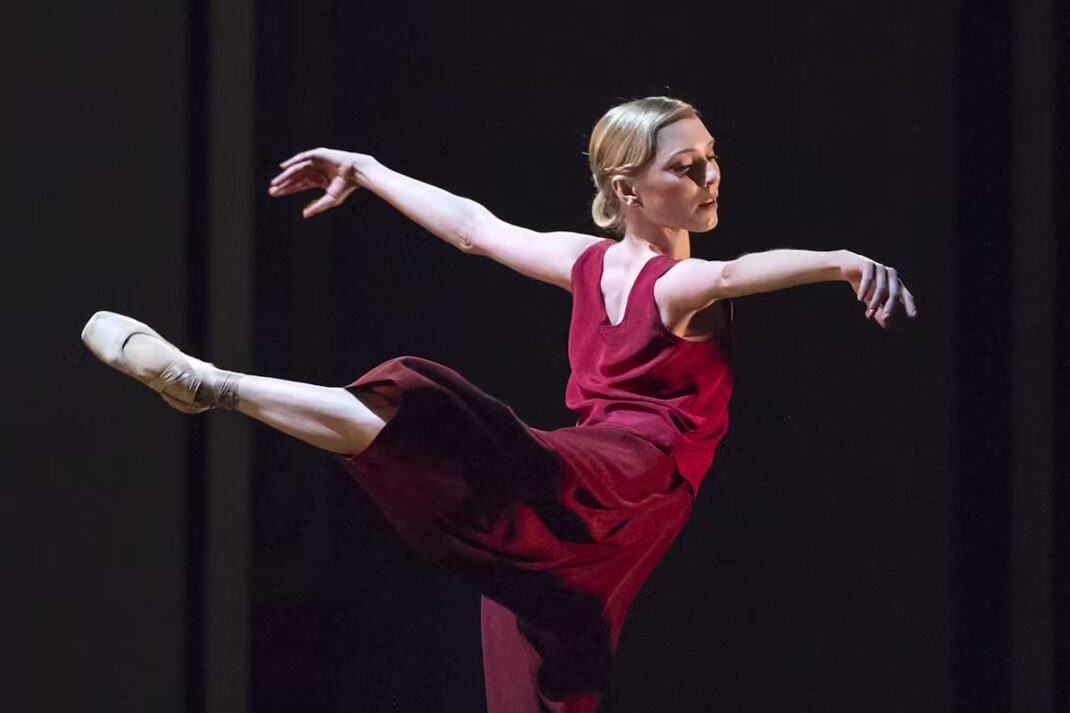
Postscript: McGregor’s Yugen was a co-production with the Dutch National Ballet.
